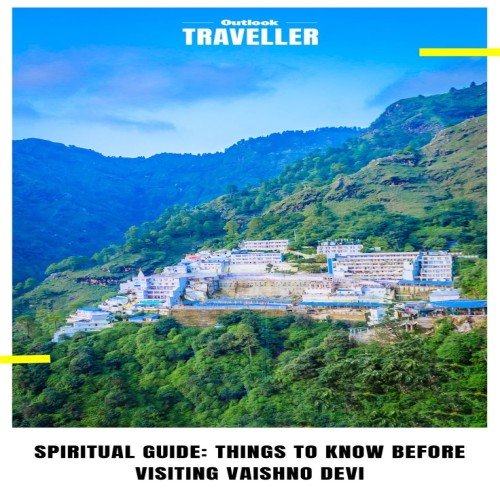
Discovering Patnitop: A Hidden Gem in Jammu and Kashmir
Posted at 13/Nov/24

Exploring Katra: The Gateway to Vaishno Devi
Posted at 13/Nov/24

Vaishno Devi Blog: A Spiritual Journey to the Divine Abode
Posted at 13/Nov/24

Discovering Hampi: A Journey Through the Ancient Ruins of Vijayanagara
Posted at 13/Nov/24
Written by Lalit Saini
Posted at 13/Nov/24

Katra, a serene town nestled in the Trikuta Mountains of Jammu and Kashmir, is known primarily as the base camp for the sacred Vaishno Devi pilgrimage. The town offers not only spiritual solace but also a peaceful retreat for nature lovers and adventure enthusiasts. Here’s everything you need to know about Katra:
The Vaishno Devi temple is the main reason why millions of pilgrims visit Katra every year. Dedicated to Goddess Vaishno Devi, the temple is located at an altitude of 5,200 feet on the Trikuta Hills. The trek to the temple is an unforgettable experience, stretching over 12 kilometers from Katra. While the journey may seem strenuous, the divine ambiance and the feeling of devotion make it worthwhile. The temple is considered one of the holiest shrines in Hinduism, and the atmosphere of spiritual fervor adds to the significance of the visit.
The trek from Katra to Vaishno Devi is a popular pilgrimage route, attracting devotees from all over the world. The 12 km journey takes you through lush green landscapes, winding paths, and various spiritual sites along the way. Pilgrims often make the journey on foot, though there are options for pony rides, palanquins, and helicopter services for those seeking convenience. As you ascend, the chants of "Jai Mata Di" fill the air, making the entire experience feel like a spiritual journey.
After visiting Vaishno Devi, most pilgrims also take a short trek to the Bhairon Temple. This shrine, dedicated to Bhairon Nath, is located on a hilltop and offers stunning panoramic views of the surrounding mountains. It is believed that a visit to the Bhairon Temple completes the Vaishno Devi pilgrimage.
The best time to visit Katra and Vaishno Devi is during the cooler months, from March to October. Winters can be harsh with snow covering the region, and the trek may become challenging. The peak pilgrimage season is during the Navratri festival when the temple attracts the largest number of devotees.
While the Vaishno Devi temple is the main highlight, Katra and its surroundings offer several other attractions worth exploring:
Katra is well-connected by road and rail. The nearest airport is Jammu Airport, around 50 km away. From Jammu, you can take a taxi or a bus to Katra. The town also has a railway station that connects it to major cities in India. Once in Katra, the trek to Vaishno Devi begins.
Katra offers a range of accommodation options, from budget hotels to luxury resorts. Many hotels are located near the base of the Vaishno Devi trek, providing easy access for pilgrims. You’ll find many restaurants and dhabas serving vegetarian food, as non-vegetarian food is not allowed in the town due to religious reasons.
Tour managers can explain well about their regions, so it is the best way to feel real experience and enjoy beautiful culture of that region
Copyright © Disha Holidays 2024-2025 | All Right Reserved